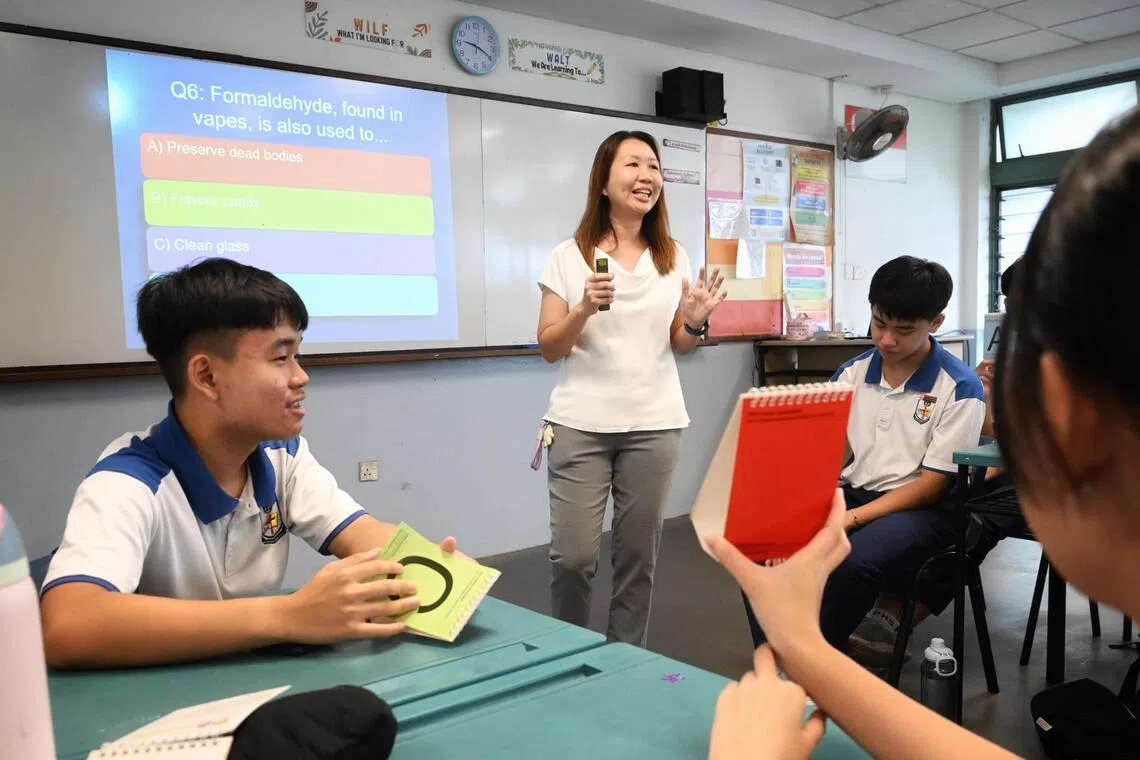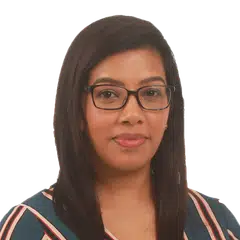MOE doubles number of allied educators, adds staff to help lighten teachers’ load
Sign up now: Get ST's newsletters delivered to your inbox

Today, each school has an average of 85 teachers, and the number of administrative staff has increased from six to around nine.
ST PHOTO: CHONG JUN LIANG
Follow topic:
- Allied educators have doubled to 1,600 in a decade, but Singapore teachers work the third hardest globally, with 40% of younger teachers wanting to leave.
- The Ministry of Education (MOE) is implementing measures such as flexible work arrangements and AI tools to manage teacher workload, recognising its increasing complexity.
- Despite initiatives like Parents Gateway, MPs note workload concerns persist; MOE cites ongoing surveys and feedback informing changes.
AI generated
SINGAPORE – The number of allied educators who counsel and work with students with special educational needs has doubled from around 800 to 1,600 across all schools in the last decade.
Today, each school has an average of 85 teachers, and the number of administrative staff has increased from six to around nine.
Minister for Education Desmond Lee revealed these numbers in Parliament on Nov 4, in response to questions from 13 MPs about teacher well-being and workload, a topic that has been in the spotlight since a recent survey found that teachers here work an average of 47.3 hours a week, up from 46 hours a week in 2018.
According to the global Teaching and Learning International Survey (Talis), released on Oct 7, Singapore teachers are the third hardest-working
The survey also showed that 40 per cent of teachers under the age of 30 said they intended to leave the profession within the next five years – a 9 percentage point drop from 2018 but still double the Organisation for Economic Cooperation and Development average of 20 per cent.
Managing heavier workloads
Mr Lee said the ministry recognises that the job of a teacher has become more complex over the years, and has adopted a range of measures to manage teachers’ workloads and support their well-being, which is reviewed regularly.
He acknowledged that when new policies and initiatives are introduced, or when policy changes are made, teachers’ workloads temporarily increase.
To this end, he said: “Good change management is key.”
Schools have been given greater flexibility to pace the implementation of new system-wide initiatives, Mr Lee added, including deferring them if necessary to manage workload. Examples include major changes such as Full Subject-Based Banding
The Education Minister listed several initiatives that have been put in place recently to address the increasingly complex nature of teachers’ workloads.
These include a common set of guidelines given to school leaders to guide workload allocation; artificial intelligence (AI) tools in the Singapore Student Learning Space to help teachers work more efficiently; as well as digital platforms like Parents Gateway to reduce time spent on administrative tasks like collecting consent forms.
Teachers also have protected vacation time of about six to seven weeks to rest and recharge. And guidelines on parent-staff communication have been updated to minimise the blurring of lines between work and personal time.
Flexible work arrangements also cater to teachers’ individual needs, for instance, allowing them to leave earlier before the end of the school day if they have no lessons or duties, or to work from home on days when they have no classes.
Teachers’ plates still as full
MPs raised follow-up questions citing feedback from those in the teaching profession that despite the measures that seek to address the wide scope of a teacher’s job role, workloads have largely remained the same.
Dr Wan Rizal Wan Zakariah (Jalan Besar GRC), who serves as an adviser to the Singapore Teachers’ Union (STU), said: “Although things have changed, it’s similar still. Because you move the pieces around, but the plate is still as much.”
He asked if MOE had conducted any recent audits on workload, to possibly reduce this pain point for teachers further.
Other MPs also asked if there was deeper engagement with teachers to understand their concerns and challenges regarding increasing workloads.
In response, Mr Lee said the ministry has conducted surveys and dialogues, as well as received feedback from the STU, which has then informed changes in the system.
“As a result, we see changes such as Parents Gateway, implemented a number of years ago. School home partnerships, as well as the MOE (Engagement) Charter, which sets out clearer boundaries and expectations and draw clear aligns between teachers and parents,” he said.
With the Talis survey finding that Singapore teachers were quick to adopt digital technologies
To this, Mr Lee said it is still “early days”.
“When you introduce AI tools, there is hidden work that’s created. Some of it is seasonal, some of it may be secular,” he said, adding that time is needed for teachers to familiarise themselves with and master these tools before seeing how they benefit workload.
With teaching becoming increasingly multi-faceted and taking place beyond the classroom, Mr Lee said MOE is committed to implementing new measures to allow teachers the space to teach with manageable workloads.
“Teaching being more holistic is no longer just found in the classroom, but also in CCA (co-curricular activities) and CCE (Character and Citizenship Education), in a whole range of other activities that enable our teachers to mould and nurture our students holistically... that help them to navigate society and the future uncertain world.”


